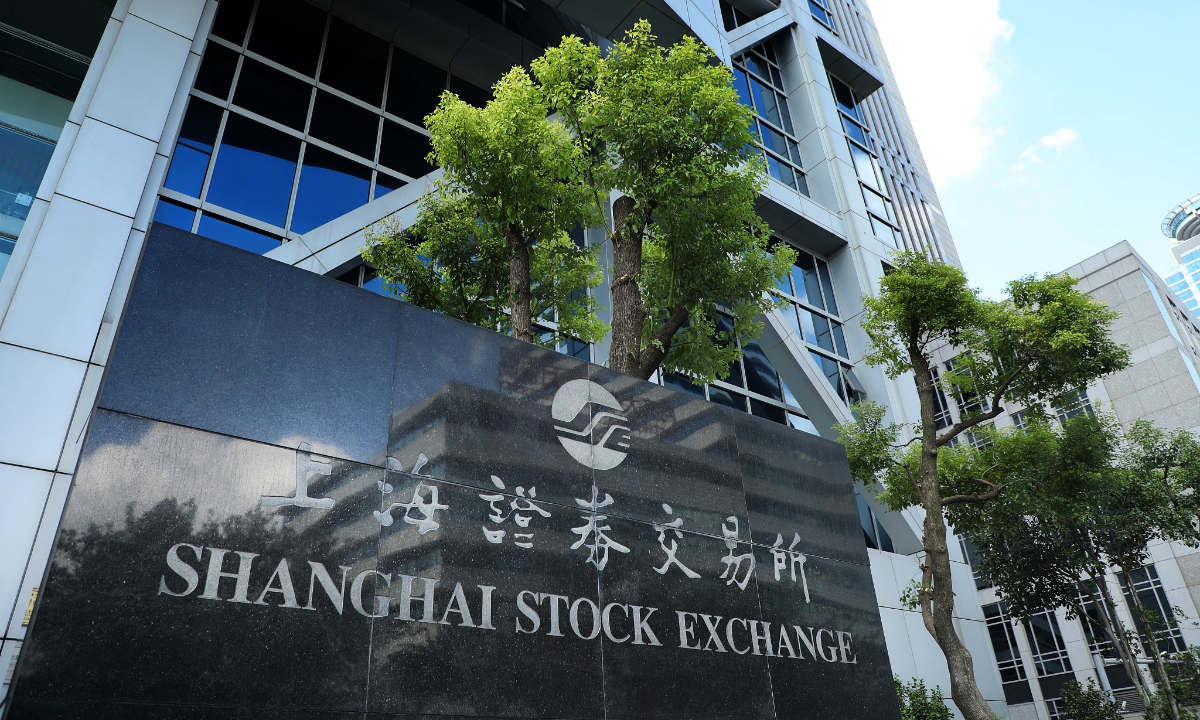
Shanghai Stock Exchange Photo:CFP
The Shanghai Stock Exchange (SSE) and the Shenzhen Stock Exchange (SZSE) have started to adjust market data dissemination for southbound trading and northbound trading under the Stock Connect regime from Monday, after the two mainland-based exchanges and Hong Kong Exchanges and Clearing (HKEX) announced the plan in April.
The adjustments are part of a commitment to the sustainable development of the mutual market access program, and they will be implemented to maintain the consistency of overall market disclosure. Experts say the adjustments enhance information disclosure, support the market development, and ensure fair access for all investors.
The arrangements for northbound trading follow the Chinese mainland stock market standard practice. HKEX has adjusted real-time disclosure arrangements for trading information in May, as real-time buy, sell and total turnover were not available.
Real-time available daily quota balance will be shown when it falls below 30 percent; otherwise indicated as “Available.” The three stock exchanges should show daily total market turnover, number of trades, ETF turnover, and turnover of the top 10 most traded stocks.
As for southbound trading, both the SSE and SZSE should disclose daily buy, sell and total turnover, number of trades, ETF turnover, and buy, sell and total turnover of the top 10 most traded stocks. Real-time available daily quota balance will be shown when it falls below 30 percent; otherwise indicated as “Available.”
“The adjustments are aimed to provide fairer access to information for all investors and are conducive to reducing excessive market volatility and stabilizing the expectations of A-share investors, with the market previously overly focused on northbound funds,” Dong Shaopeng, a senior research fellow from the Chongyang Institute for Financial Studies at the Renmin University of China, told the Global Times on Monday.
In the long run, investors will rely more on company fundamentals, macroeconomic data and other market data to make investment decisions, which will further stabilize the domestic stock market, Xi Junyang, a professor at the Shanghai University of Finance and Economics, told the Global Times on Monday.
Since the launch of the Stock Connect regime, it has become an important window for the two-way opening up of China’s capital market, which has positively contributed to the reform and stable development of the capital market in both Chinese mainland and Hong Kong.
A series of optimization measures include removing the aggregate trading cap, expanding daily quotas for its Shanghai-Hong Kong stock connect and Shenzhen-Hong Kong stock connect, and enhancing the trading calendars for both Shanghai and Shenzhen Stock Connect.
Xi said that the continuous improvement of the Stock Connect mirrors the country’s financial opening-up agenda, as one of the aspects of financial opening-up is manifested in the interaction of financial products between the Chinese mainland and Hong Kong.
Looking ahead, the three stock exchanges are expected to further optimize and improve the interconnection mechanism, and help the high-level institutional opening-up of the capital market.
In addition to stocks, other financial trading activities are also expanding connectivity, such as Bond Connect, Xi said.




